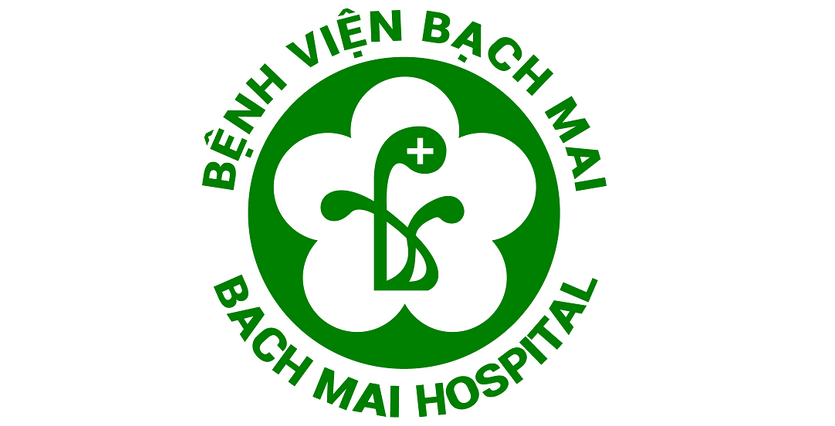Bệnh viện bạch mai * Bach Mai Hospital
Tạp chí Y học lâm sàng * Journal of Clinical Medicine
Website : www.jocm.vn Email : jocm@bachmai.edu.vn Phone : +84947040855
NGHIÊN CỨU MỐI LIÊN QUAN GIỮA GIÁ TRỊ SPO2, KHÍ MÁU ĐỘNG MẠCH VỚI KẾT QUẢ CAI THỞ MÁY XÂM NHẬP Ở TRẺ SƠ SINH TẠI TRUNG TÂM NHI KHOA, BỆNH VIỆN BẠCH MAI
- Mã bài báo : 135.06
- Ngày xuất bản : 31/07/2023
- Số trang : 43-50
- Tác giả : Nguyễn Thành Nam
- Lượt xem : ( 1434 )
https://doi.org/10.52322/jocmbmh.135.06
TÓM TẮT
Mục tiêu: Nghiên cứu loạt ca bệnh được thực hiện nhằm xác định mối liên quan của việc đo spO2 và khí máu trong tiên lượng rút nội khí quản thành công ở trẻ sơ sinh thở máy xâm nhập.
Đối tượng và phương pháp nghiên cứu: Nghiên cứu tiến hành tại Trung tâm Nhi khoa – Bệnh viện Bạch Mai từ tháng 11/2020 đến tháng 11/2021 trên 41 trẻ sơ sinh được thở máy xâm nhập và tất cả trẻ đã rút nội khí quản ít nhất 48 giờ mà không phải đặt lại. Tất cả trẻ được ghi spO2 trước và sau rút ống 2 ngày và làm xét nghiệm khí máu trước và sau khi rút ống 1 giờ.
Kết quả: Các chỉ số SpO2/FiO2 và SOI đều trong giới hạn bình thường trước và sau rút nội khí quản thành công. Khí máu trước và sau rút nội khí quản thể hiện hoạt động chức năng oxy hóa máu tốt và không tăng CO2 máu. So sánh với những lần rút nội khí quản thất bại, chỉ số SpO2/FiO2, SOI và khí máu sau rút nội khí quản xấu dần, kết hợp với biểu hiện lâm sàng suy hô hấp tăng lên.
Kết luận: Nghiên cứu cho thấy, cần theo dõi sát SpO2 và khí máu trước và sau rút nội khí quản, kết hợp với lâm sàng của trẻ để tiên lượng rút nội khí quản thành công.
Từ khóa: sơ sinh non tháng, thở máy xâm nhập, rút nội khí quản, spO2, khí máu
ABSTRACT
THE RELATIVE BETWEEN SPO2 VALUE AND ARTERIAL BLOOD GAS TO RESULTS OF EXTUBATION IN NEONATES AT THE PEDIATRIC CENTER OF BACH MAI HOSPITAL
Objectives: To determine the association of spO2 and blood gas measurements in the prognosis of successful extubation in neonates with invasive mechanical ventilation.
Participants and Methods: The study was conducted at the Pediatric Center of Bach Mai Hospital from November 2020 to November 2021 on 41 neonates receiving invasive mechanical ventilation who had been extubated at least 48 hours without having to intubate. All neonates were recorded 2 days before and after extubation for spO2 and arterial blood gas measurement 1 hour before and after extubation.
Results: SpO2/FiO2 and SOI were within normal limits before and after successful extubation. The blood gases before and after extubation of the neonates showed good blood oxygenation function and no hypercapnia. Compared with failed extubation, SpO2/FiO2, SOI, and blood gas index after extubation gradually worsened, combined with clinical manifestations of respiratory failure increased.
Conclusion: The study shows that it is necessary to closely monitor SpO2 and blood gases before and after extubation, combined with the child's clinical practice to predict successful extubation.
Keywords: preterm newborn, invasive mechanical ventilation, extubation, spO2, arterial blood gas.
- DOI : 10.52322/jocmbmh.135.06
- Chủ đề : Nhi khoa
- Loại bài báo : Nghiên cứu gốc
- Chuyên nghành : Chuyên nghành Y khoa
 Thông tin liên hệ : Lê Diệu Linh
Thông tin liên hệ : Lê Diệu Linh Email : ledieulinhlinh@gmail.com
Email : ledieulinhlinh@gmail.com  Địa chỉ : Trung tâm Nhi khoa, Bệnh viện Bạch Mai
Địa chỉ : Trung tâm Nhi khoa, Bệnh viện Bạch Mai
Bài báo liên quan
- ĐÁNH GIÁ BIẾN ĐỔI ĐỘ ĐÀN HỒI DA THEO LỨA TUỔI VÀ ẢNH HƯỞNG CỦA MÔI TRƯỜNG ĐẾN ĐỘ ĐÀN HỒI DA NGƯỜI VIỆT TRƯỞNG THÀNH
- THỰC TRẠNG QUẢN LÝ ĐIỀU TRỊ NGƯỜI BỆNH TĂNG HUYẾT ÁP TẠI CÁC TRẠM Y TẾ XÃ THUỘC HUYỆN YÊN PHONG, TỈNH BẮC NINH NĂM 2023
- TUÂN THỦ ĐIỀU TRỊ KHÁNG SINH TRÊN BỆNH NHÂN MẮC ĐỢT CẤP BỆNH PHỔI TẮC NGHẼN MẠN TÍNH CÓ YẾU TỐ NGUY CƠ NHIỄM P.AERUGINOSA TẠI TRUNG TÂM HÔ HẤP BỆNH VIỆN BẠCH MAI
- ĐẶC ĐIỂM HÌNH THÁI VI NẾP NHĂN BỀ MẶT DA Ở NGƯỜI VIỆT NAM TRƯỞNG THÀN
- MỘT SỐ YẾU TỐ NGUY CƠ GÂY TĂNG MEN GAN Ở TRẺ EM ĐIỀU TRỊ TẠI TRUNG TÂM NHI KHOA, BỆNH VIỆN TRUNG ƯƠNG THÁI NGUYÊN
- NHẬN XÉT ĐẶC ĐIỂM HÌNH ẢNH CÁC BIẾN THỂ GIẢI PHẪU MŨI XOANG TRÊN CẮT LỚP VI TÍNH ĐA DÃY
- MỘT SỐ YẾU TỐ LIÊN QUAN ĐẾN KẾT QUẢ ĐIỀU TRỊ TRẺ SƠ SINH THỞ MÁY TẠI BỆNH VIỆN TRUNG ƯƠNG THÁI NGUYÊN
- NGHIÊN CỨU MỐI LIÊN QUAN GIỮA GIÁ TRỊ SPO2, KHÍ MÁU ĐỘNG MẠCH VỚI KẾT QUẢ CAI THỞ MÁY XÂM NHẬP Ở TRẺ SƠ SINH TẠI TRUNG TÂM NHI KHOA, BỆNH VIỆN BẠCH MAI
- KIẾN THỨC VỀ RỐI LOẠN TÂM THẦN CỦA NGƯỜI CHĂM SÓC NGƯỜI BỆNH ĐANG ĐIỀU TRỊ NỘI TRÚ TẠI VIỆN SỨC KHỎE TÂM THẦN, BỆNH VIỆN BẠCH MAI
- KẾT QUẢ ĐIỀU TRỊ BỆNH LAO TRẺ EM THEO HƯỚNG DẪN CỦA CHƯƠNG TRÌNH CHỐNG LAO QUỐC GIA TẠI KHOA NHI, BỆNH VIỆN PHỔI TRUNG ƯƠNG
- BÁO CÁO CA LÂM SÀNG ĐẶT STENT KHÍ QUẢN ĐIỀU TRỊ SẸO HẸP KHÍ QUẢN
- BÁO CÁO CA LÂM SÀNG SARCOIDOSIS NỘI PHẾ QUẢN
- QUẢN LÝ VÀ ĐIỀU TRỊ BỆNH THUỶ ĐẬU Ở NGƯỜI LỚN: CẬP NHẬT Y VĂN THẾ GIỚI VÀ VIỆT NAM
Bài viết mới nhất
- Tạp chí YHLS BVBM được phê duyệt mức điểm 0,75 trong Danh mục tạp chí khoa học được tính điểm năm 2024 của HĐGSNN
- Thư mời gửi bản thảo cho số tiếng Anh năm 2023 của Tạp chí Y học lâm sàng
- Chúc mừng Ngày Báo chí Cách mạng Việt Nam 21/06
- Giải thưởng Đặng Văn Chung: Tôn vinh giá trị sáng tạo và Nghiên cứu khoa học
- Quy định về định dạng bài báo theo định dạng chuẩn quốc tế

 File toàn văn
File toàn văn



